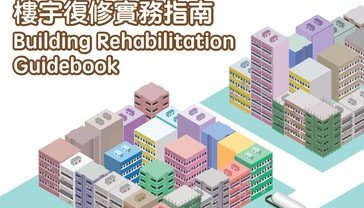The Buildings Department enforces regulations under the Buildings Ordinance (Cap. 123) to oversee building safety. It issues statutory orders to owners who fail to maintain their buildings properly, instructing them to repair defective parts or engage qualified personnel to inspect suspicious areas and submit assessments with recommended actions.
Under Sections 26/26A of the Buildings Ordinance, if any building has been rendered dangerous due to external causes, natural wear, or neglect, the Building Authority (BA) can issue a statutory order (commonly known as a “repair order”) to the owners. This order mandates appropriate remedial measures according to the situation and legal requirements, such as repair works and the erection of supporting pillars or balustrades.
If a building’s condition is deemed unsatisfactory but not dangerous, the Buildings Department may issue a statutory order (commonly known as an “investigation order”). This order instructs the owners to appoint an authorised person to inspect the prescribed parts of the building and propose remedial works for the Building Authority’s approval before they can be carried out. In addition to an inspection of the entire building, canopies and balcony structures are both common prescribed parts.
Furthermore, Section 30B mandates that the Building Authority issue statutory notices (commonly known as “mandatory building inspection notices”) to owners of private buildings aged 30 years or older (excluding residential buildings not exceeding three storeys). These notices require a registered inspector to conduct specified inspections of the common parts, external walls, and projections or signboards, as well as oversee the specified repairs mentioned in the inspection report. The scope of prescribed inspection (and repair works) covers structural components (like beams and columns), fire safety components (e.g., fire-rated doors), drainage systems (e.g., pipes) and the identification of existing UBWs.
Similarly, Section 30C mandates statutory notices (commonly known as “mandatory window inspection notices”) to owners of private buildings over 10 years old (excluding residential buildings not exceeding three storeys), requiring prescribed inspection and repair works of all windows of the building within a specified period. Once a mandatory window inspection notice is complied with, new notices in respect of the same windows will not be served in 5 years from the issue date of the original order.
The ordinance also addresses drainage issues, as laid out in Section 28. If a building's drainage system is deemed insufficient or is found to be in a defective or insanitary condition, the Buildings Department will issue a statutory order for prescribed drainage works. Owners may be required to appoint an authorised person for inspection on the drains or sewers of the building, with suggested remedial works tabled for BD’s approval for their execution.
Failing to comply with repair orders, investigation orders, or mandatory building inspection notices without reasonable excuse is an offence, punishable by a fine of HKD 50,000 and one year in prison, with an additional fine of HKD 5,000 for each day the offence continues.
Failure to comply with a mandatory window inspection notice without reasonable justification results in a fixed penalty of HKD 1,500. Repeat offenders may face prosecution, with a maximum penalty of HKD 25,000 and three months in jail, plus an additional fine of HKD 2,000 for each day the offence continues.








